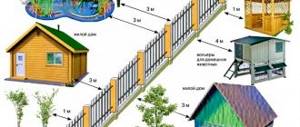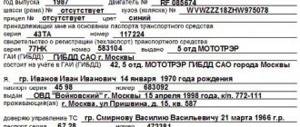Home / Account
Back
Published: 04/06/2020
0
7
- 1 Registration of a local area: procedure
- 2 Registration procedure
- 3 Pros and cons of the deal
- 4 Boundary designation
- 5 Procedure
- 6 Timing and cost
- 7 Who owns the local area?
- 8 Tax issue and responsibilities of owners
- 9 Algorithm of privatization measures
Registration of a local area: procedure
According to the current housing and urban planning legislation, a local area is a plot of land adjacent to the boundaries of an apartment building, which is auxiliary in nature for maintaining the house, its improvement and the formation of a comfortable urban environment. Including there is an internal (closed) list of objects that are allowed to be built on the territory of the yard:
- Landscaping elements - children's play complexes, benches and trash cans. This also includes landscaping and planting trees that have a beneficial effect on the environment;
- Building maintenance facilities and transport infrastructure - this list includes garbage containers, clothes drying devices, carpet cleaning and other elements that, in particular, came to us from past years. For personal transport of residents, parking spaces, garage structures and parking can be formed, indicating the link of a specific car to its territory;
- Objects that generate additional income - this includes types of buildings that may have a commercial nature in their activities. The only important condition is the absence of claims from the owners of neighboring houses. Otherwise, a dispute may arise, which will subsequently lead to litigation.
| Organization of a general meeting of residents | The owners of apartments in the buildings to which the territory belongs must be present at the general meeting. For the decision of the meeting to be recognized as valid, more than 50% of the residents must gather. All results and collective decisions are recorded. If the owners have approved the draft boundaries, a responsible person is selected. The representative will act on behalf of the apartment owners. |
| Submitting an application | It is necessary to find and fill out an application for re-registration of the territory into shared ownership. Collect the following papers:
The application and package of documents should be sent to the Land Resources Committee. |
| Land surveying (not always required) | To approve the boundaries of the site you will need:
|
| Registration of land | To complete the registration of the territory, the representative contacts Rosreestr and provides:
A record of land ownership is entered into the Unified State Register. The plot is registered with the cadastral service. The residents' representative receives a technical passport for this object, a certificate confirming ownership. |
After privatization, the land passes from state ownership to the ownership of the residents of the apartment building. Owners or management companies will be able to improve the site.
Area and boundaries
Before starting the procedure, you should find out whether the boundaries of the site are defined. Sometimes the answer to this question is yes, but most often you have to determine them on demand. To do this, you need to contact the Municipal Property Management Committee or another body to determine the boundaries and calculate the area of the land plot.
The area of the plot is calculated using a special formula by multiplying the specific indicator of the land share by the area of all premises in the building. There may be technical structures on the territory of the yard, the land under which will also be included in the area.
According to the minimum indicator, the area of the plot should be equal to the area under the house, but this parameter is influenced by various factors, so without a cadastral passport it is impossible to calculate the tax in advance.
Within the boundaries of a single indivisible area of the yard there are:
- parking lots;
- apartment house;
- transformer substation;
- sports grounds;
- playgrounds;
- clothes dryers, etc.
Once the area is known, the residents of the house can discuss privatization at a general meeting and decide whether they need it or not. The privatization process itself is also important.
Registration procedure
(105.00 out of 5)Loading…
Privatization of the local area of an apartment building makes it possible to register the land adjacent to the houses as the property of all residents. The procedure is free of charge and allows you to protect land from illegal development.
Increasingly, Russian owners of apartments and premises in apartment buildings are puzzled by the status of common property - staircases, common balconies, attics and basements.
The privatization of the local area in an apartment building to organize the ability to manage the space in accordance with the needs of the house is also becoming an acute issue.
What this procedure is, what nuances and features it has – we will consider below.
Adjacent or adjacent is the territory directly adjacent to the boundaries of an apartment building and used to ensure its normal operation.
The laws by which the composition of the local area of an apartment building can be determined are as follows:
- Housing Code (December 29, 2004 N 188-FZ) – clause 4, part 1, art. 36;
- Rules for maintaining the common property of an apartment building (approved by Government Decree No. 491 of August 13, 2006) – paragraphs. f), g) clause 2 of section I.
The rules establish that the local area of an apartment building includes:
- the land plot on which the house is located;
- elements of landscaping and improvement related to an apartment building;
- collective parking lots and garages;
- children's and sports grounds.
Attention! Which specific sites belong to the house must be looked at according to the boundaries specified in the Unified State Register of Real Estate. To do this, you need to order an extract for an apartment building, in the graphic part of which the landmarks and configuration of the site will be schematically indicated. Additional information is stored in the technical documentation of the HOA or management company servicing the house.
Despite the fact that, by law, the adjacent territory should automatically belong to the owners, in practice it turns out that due to the peculiarities of cadastral registration during the adoption of key codes (Land, Housing, Civil), most of the territories remained undemarcated.
As a general rule, until the local area is registered as the property of the residents, it is owned and managed by the municipality. After privatization, the formal owners become the owners of premises in an apartment building. This allows them to:
- decide exactly how to use the courtyard area - for example, to place a children's complex, equip a parking lot or a green recreation area for all residents, install garages;
- carry out prompt repairs of equipment without waiting for a decision from the authorities;
- effectively influence the management company or homeowners association, which will no longer have the opportunity to refer to the administration’s inaction;
- rent out land to owners of shops, repair shops, etc.
The financial burden is also redistributed. Since the burden of maintaining the property always lies with the owner, from the moment of privatization, worries about financing will fall on the residents.
It is impossible to say unequivocally whether it is worth registering land under MKD as ownership or not, since there cannot be a universal solution here. There are both advantages and disadvantages to this option, and the final choice depends on the individual situation.
| Advantages | Flaws |
| the ability to fully dispose of the land plot in accordance with the needs of the house; effective control over the work of management companies and service organizations; reduction in repair costs if owners actively participate in organizing the work; the risk that the improvement work will be demolished by the administration is eliminated (for example, if residents decide to lay new asphalt, no one will remove it); the opportunity to receive additional income from rental, which is used for general house needs. | - the procedure is quite labor-intensive; - management will be carried out through meetings, which are difficult to organize; - in large apartment buildings, management will be difficult due to the large number of inactive owners; - the effectiveness of management directly depends on the activity of the owners and the initiative group. |
Attention! Remember that privatization of the local area does not mean that the land can be divided among everyone and a small plot can be distributed to everyone. The territory will remain common and can be disposed of by common consent.
Basic recommendation: when deciding on the privatization of local land, pay attention to the number of apartments and the mood of the owners. Activity can be measured by the number of people present at annual general meetings, at which the management company (HOA) presents its annual report.
The initiative will be successful in small buildings with interested residents, but in large complexes with inactive owners it will most likely fail.
The following may require registration of rights to the entire land plot adjacent to an already occupied house:
- owners of MKD premises - apartments, rooms, non-commercial premises;
- an initiative group of owners that has secured the position of the general meeting;
- one representative of the house (for example, the Chairman of the Council), elected by the owners;
- UK, HOA.
If the house is just being built, the developer has the right to begin privatization. The main condition is that the title owner of the house (a meeting of residents or the developer) express a desire for privatization.
Attention! Individual owners have the opportunity to privatize only part of the adjacent territory in proportion to the share in the right to the property of an apartment building. You need to understand that the actual size of such a plot will be very small. The privatization procedure in this case will be unprofitable.
Procedure
The procedure for privatizing the adjacent territory of an apartment building is carried out in several successive stages. The easiest way is to first create an initiative group and outline a procedure with approximate deadlines and cost of registration.
Each region has its own nuances of privatization of municipal land. Before holding a meeting and subsequent stages, we recommend consulting with a specialist in the management of municipal property in your locality. The official will talk about the local nuances of privatization and print out application forms developed by the administration.
The general meeting of owners on the issue of privatization of the local area is held according to the rules of any other general meeting - for example, an annual one:
- the initiative group generates a message that is posted in a publicly accessible place or sent to everyone personally - depending on how it is provided for in a given apartment building;
- on the appointed day, residents gather and vote - the presence of at least 50% of the owners must be present, and at least half of those who come must vote “FOR”;
- the results of the meeting are documented in the minutes of the meeting, which are signed by the secretary and chairman. The protocol must immediately reflect who exactly is given the authority to act on behalf of the apartment building on the issue of privatization of the local area - to sign and submit documents.
Attention! If an in-person meeting did not take place, an absentee meeting can be held.
From this point on, the minutes of the meeting become the central legal document on the basis of which other transactions can be carried out.
If the local area is not demarcated, it is necessary to carry out land surveying, that is, to determine the boundaries on the ground. Citizens will not be able to do this on their own; they will need the help of a cadastral engineer. You can contact any company that employs competent specialists.
As a result of this stage, a boundary plan of the local area appears in the hands of the responsible person.
Most ordinary people are not very familiar with the Land Code of the Russian Federation, because it is mainly specialists who need to know its intricacies.
But sometimes understanding the law simplifies real estate transactions, which are carried out not only by specialists, but also by ordinary people.
For example, privatization of a local area: what steps to take, nuances and subtleties, necessary documents. We'll talk about all this further.
About operation
According to Article 36 of the Housing Code, each owner of premises in multi-storey buildings has the right to use the land plot adjacent to the house and the buildings and other structures located on it on a shared basis, that is, they are its co-owners. The area adjacent to a house or several apartment buildings cannot be divided into parts that will be available to residents of only one entrance, floor, and so on. This rule applies to buildings of any size.
Even if privatized, the land cannot be completely fenced off in such a way that non-residents of nearby yards will not be able to move through it. When planning the arrangement of the local area, it is necessary to take into account compliance with all standards:
- social;
- technical;
- sanitary;
- fire protection;
- aesthetic.
The delineation of the local area of apartment buildings is a mandatory procedure before privatization; it determines the boundaries of the site that is adjacent to one or more apartment buildings.
According to the Land Code of the Russian Federation, the size of adjacent areas may differ and depends on several factors: the ratio of the living area of the house and the land plot, the number of floors and apartments, proximity to other buildings, decisions of the city administration.
The procedure for surveying the territory of an apartment building is a mandatory condition for everyone. It should be borne in mind that the adjacent land area and privatized property, in accordance with Article 85 of the Land Code of the Russian Federation, cannot include public areas, for example, squares, parks, road passages and others.
Based on the mere fact of use, the adjacent land does not belong to the owners of the apartments, therefore it is necessary to officially register the adjacent territory as property, that is, privatization.
Many apartment owners have a logical question: is it worth registering the adjacent areas as property? The advantages of the fact that the land adjacent to the apartment building becomes private property:
- free procedure for privatization of the local area in an apartment building;
- the possibility of obtaining additional profit from leasing part of the land for the commercial needs of third parties, which can be used to pay off debt on utility bills or pay for landscaping work;
- protection of the territory from unauthorized development, installation of car parking;
- obtaining the legal right to dispose of the land adjacent to the house at the discretion of the residents.
Attention!
- Due to frequent changes in legislation, information sometimes becomes outdated faster than we can update it on the website.
- All cases are very individual and depend on many factors. Basic information does not guarantee a solution to your specific problems.
That's why FREE expert consultants work for you around the clock!
- via the form (below), or via online chat
- Call the hotline:
APPLICATIONS AND CALLS ARE ACCEPTED 24/7 and 7 days a week.
Problems that may arise
The first difficulty that is often talked about today is the impossibility of privatization. The fact is that with the development of the city, a huge number of plots are quickly going under the hammer. At the moment when residents decide to privatize, the area in front of their house turns out to be smaller in area than the area under the house. This is contrary to the law, and as a result privatization becomes impossible. That is why it is often advised to register the territory of the yard as property as quickly as possible.
Another problem is maintaining the local area. In summer this is not so noticeable, but in winter the problem of snow removal arises. In large yards, you have to hire several janitors at once. You shouldn’t be afraid of this, because living in a well-kept yard is pleasant. Some citizens make barriers and expand playgrounds for the benefit of residents.
In case of breakdowns in the yard, as mentioned above, all costs will fall on the shoulders of the residents. On the one hand, this is a heavy burden. In the most serious cases, you can sell part of the yard and recover losses.
Sometimes residents of apartment buildings do not know that the courtyard territory belongs to them. As a result: in the parking lots, most of the cars do not belong to the residents; spontaneous trade is developing in full force near the house. To avoid problems, you need to deal with them in a timely manner and treat your local area as scrupulously as you treat your home.
Privatization of the local area of an apartment building.
Privatization of the local area of an apartment building makes it possible to register the land adjacent to the houses as the property of all residents. The procedure is free of charge and allows you to protect land from illegal development.
Pros and cons of the deal
This solution has both advantages and disadvantages. The advantages include the following:
- the opportunity to protect against unwanted development - the construction of new houses, shops and other commercial real estate.
- Possibility of making a profit through rent.
- Clarification of the territory and adjustment of costs for its maintenance.
- Increase in the cost of apartments.
- You can improve the site at your own request (by general agreement of the residents).
Important! The profit thus obtained can only be spent on repairs and improvements to the house or the area in front of it.
But there are also disadvantages:
- Residents will have to pay for the maintenance and repair of the territory (including roads).
- You will also have to pay land tax.
The tax amount is calculated in proportion to the share in the common property, that is, the size of the apartment.
The advantages of privatizing land near the MKD include:
- the ability of owners to prohibit the construction of undesirable buildings;
- making a profit from rent (the funds should go exclusively to the maintenance of the apartment building and the surrounding area);
- The procedure for obtaining land ownership is free.
If we talk about the disadvantages of owning a house plot, then among them are:
- owners will have to pay land tax, the amount of which can be significant;
- residents undertake to maintain and improve the territory;
- On the site you can build objects, the list of which is limited.
Before contacting local authorities with a proposal to privatize a site, you should pay attention to the advantages and disadvantages of this solution. After all, maintaining a large plot can become a serious problem for residents.
Responsibilities and Consequences
We have previously discussed the consequences in the section on the pros and cons of privatization. However, it is worth talking in more detail about the tax that will become mandatory after it.
This refers to land tax, which is calculated in accordance with Article No. 360 of the Tax Code of the Russian Federation. The amount of the payment depends on:
- market indicators of cadastral value for the last period;
- coefficient, which is set by local authorities (it differs depending on the region).
Some citizens are eligible for a tax deduction, which is an advantage. Payment is made once a year.
Boundary designation
The size of the local area must be specified in the technical passport after the house is put into operation. The minimum size of the adjacent plot cannot be less than the area occupied by the house. If this value is not established in the documents, you must contact the municipal body that manages the city’s property.
To establish the boundaries of the area adjacent to the buildings, mandatory land surveying is carried out. The size of the area adjacent to the house is determined taking into account a number of factors:
- number of floors and apartments;
- perimeter of a residential building, foundation;
- land area;
- presence of neighboring buildings;
- instructions from administrative authorities.
According to the law, public areas cannot be included in the privatized area: driveways, squares, park areas. The draft boundaries of the site are submitted for approval by residents.
Thus, before privatization (if the territory is not listed in the cadastral register), it is necessary to register with the administration and order land surveying from the BTI.
Instructions for privatization of the local area of the house
The law provides a prescribed procedure for the privatization of territories located next to a residential building.
The procedure is carried out in several stages:
- At a general meeting, apartment owners must decide on the need for privatization.
- If all members agree, then a representative must be selected to submit the application.
- A protocol should be drawn up based on the results of the meeting. It states the result of the discussions.
- The representative must contact the agency dealing with such issues. This is the Department of Land Resources. A person submits an application to transfer the local area into private hands through the procedure of shared ownership.
- After reviewing the documents, land surveying will be carried out. The plot is registered in the cadastral register.
- When transferring a plot into shared ownership, the rights must be documented.
- The final stage is state registration of the rights of one or more owners.
Privatization of a private house in rural areas begins with collecting a package of relevant documents and submitting them to the village council at the place of residence.
In what cases is forced privatization possible, read the article at this link.
Procedure
- The initiative group prepares information about the plan of the territory and the objects located on it. Documents can be obtained from the BTI.
- Carry out land surveying.
- Submit an application for privatization.
- Register your land rights.
To carry out the procedure, the applicant will need the following documents:
- building plan;
- residents’ decision (if a meeting was held);
- documents confirming the land surveying;
- registration certificate
Statement
As for the application, there is a special form for this document. Therefore, privatization initiators should not draw up a free-form application.
Conclusion of an agreement
This is the last stage of privatization of the local area. The applicant enters into an agreement with the municipality on the use of the land.
If all owners have the right of ownership, then a collective agreement is drawn up.
Is privatization necessary?
The issue of validity and necessity of obtaining rights to the local area should be resolved based on specific situations. In some cases, privatization allows you to create better living conditions and receive some income from advertising or rent. Sometimes a not entirely “convenient” area through which city communications and internal roads pass is transferred as a local area, which automatically prohibits any construction, landscaping, or other use of the land. For these reasons, in order to obtain a site that residents could optimally use in their own interests, it will be necessary to go through many authorities and carry out a lot of approvals.
Timing and cost
When privatizing the local area of an apartment building, the following expenses may arise:
- drawing up a boundary plan - from 7,000 rubles;
- obtaining extracts for house and land - from 300 rubles per document;
- expenses for holding a general meeting (printing, posting notices, sending letters) – several thousand rubles;
- state duty for consideration of an application for privatization is free;
- The state duty for registration in Rosreestr is 200 rubles from each owner (clause 23, clause 1, article 333.33 of the Tax Code of the Russian Federation).
If citizens decide to seek legal assistance, they will additionally have to pay for the services of a specialist - from 10,000 rubles. We remind you that preliminary consultation with our duty lawyer on the issue of privatization of the territory of an apartment building is free of charge.
The timing of privatization depends on the efficiency of citizens:
- holding a general meeting – up to 1 month;
- production of a boundary plan – up to 14 days;
- consideration of the application by the administration - up to 30 days;
- registration with Rosreestr – up to 14 days.
In total, it will take approximately 3 months to privatize the territory of an apartment building.
How to privatize land under a private house for two owners
- Land Code of the Russian Federation (Article 39);
- Federal Law No. 178 of December 21, 2001 (Articles 1, 2, 18).
The right of ownership is guaranteed by the Constitution of the Russian Federation to every citizen, but becoming its owner is not so easy.
The easiest way is privatization. It consists of registering ownership of plots and residential properties that belong to the state or other institutions or organizations.
Simple does not mean easy, since privatization can be complicated by many problems:
- Lack of documents confirming the legal grounds for the transfer of real estate ownership;
- The presence of two or more owners of a house located on non-privatized land;
- Death of one of the privatization participants;
- Refusal of registered residents to participate in privatization.
The priority right to transfer the land under a residential building into ownership has its owner.
What documents are required for privatization?
To privatize a plot under a house for free, you will need the following documents:
- Statement of the established form;
- General civil passport of the Russian Federation;
- Documents that confirm the legality of the basis for the transfer of land ownership;
- Certificate of initial participation in privatization;
- Permissions of all shareholders;
- Cadastral and technical passports;
- Plan of the site and the residential property located on it;
- Extract from the Unified State Register of Ownership of the house;
- Other documents that may be requested by the authorized body.
A certificate of privatization participants is issued at the passport office. Plans and passports can be obtained from Rosreestr; some documents are taken from the BTI. The privatization agreement received after registration does not need to be certified by a notary. You need to come with it to the Unified State Register and register ownership.
In cases where there are missing documents, they can be restored. But this is a lengthy process that will require additional costs.
What obstacles may arise during privatization?
Often registered citizens refuse to participate in privatization. But registration of ownership by other residents does not deprive him of the right to lifelong residence in the disputed premises. For example, a minor child may be registered but not a participant in privatization. Parents or legal representatives make decisions for him.
Upon the death of one of the participants in the privatization process
If one of the participants in the privatization dies, then his share passes to the heirs. It is with them that the issue of the future status of the land will have to be resolved.
In the case where the deceased agreed to privatization and had already written an application, or intended to draw it up, the right to transfer the plot of land into ownership can be proven in court.
The refusal of authorized bodies to issue a privatization permit is legal. This decision can only be reviewed by filing a statement of claim.
When privatizing a house for two owners
In order to successfully privatize land under a private house for two owners, you must first find out when ownership rights arose or the grounds for obtaining it. If before 2001, then the procedure can be completed free of charge. After this time, if there are no grounds, it will be possible to privatize the plot only for an additional payment - at the price of the cadastral value.
Each owner owns an equal amount of land. You can purchase land only with the permission of all owners of a private house. It will not be possible to do this individually.
Methods for privatizing a plot with two owners
Privatization of land under a private house, which is in shared ownership, is possible without the written permission of the second owner, only after the division of joint property. If the shareholder does not give his consent, it is necessary to file a claim in court. Once the common property is divided, obtaining rights to the plot will not be difficult.
The second method will allow you to solve the problem without judicial intervention. You can register a plot through a lease agreement. To do this, it is necessary to send an application to the land holder to provide the plot for indefinite use. The second owner will not be able to avoid signing the document. Based on this agreement, you can privatize your part of the land without the permission of the other owner.
Another way is to buy a private house at auction
A plot of land can be purchased at auction. Applications will be accepted within 25 days after the proposal is issued. If only one participant in the privatization auction responded, then such auctions are considered invalid.
Judicial practice on controversial issues of privatization
There are situations when privatization is refused due to the fact that a private house or plot is not listed in the housing stock. In this case, the court remains on the side of the tenant - the legal grounds for registration of property are sufficient to recognize the right of ownership. For example, the decision in case No. 2-2180/2017.
Source: https://room46.ru/kak-privatizirovat-zemlyu-pod-chastnym-domom-na-dva-hozyaina/
Who owns the local area?
An apartment building in a general sense belongs to its owners, that is, the owners of apartments and built-in non-residential premises. At the moment, management organizations are being actively introduced, which, as their professional activity, represent and organize the work of apartment buildings as housing facilities.
Accordingly, if the owners want to privatize their local area, they will have the right to act both on behalf of themselves directly and through the management company. The first option is, of course, more convenient in that in any situation, up to the change of its controlling residential company, the owners will remain directly those who own the premises in this building.
However, only one person, selected by a representative, will initially participate in the application process. And after the completion of the work, he will be able to allocate to everyone their due share.
Privatization of land under a private house: subtleties and complexities of the procedure
G. Alekseev Author of the article
In this article we talk about typical options for resolving legal issues, but each case is unique. Take advantage of a free consultation specifically for your specific case, call right now by phone: (it's free)
+7 – Moscow
+7 – St. Petersburg +7 ext.636 – 24-hour toll-free line throughout Russia
Privatization of land plots on which individual houses and country cottages are built is not as widespread as the apartment procedure of the same name.
This is due to the fact that the land in most cases was in perpetual use by citizens for several generations, and the documents for it have not been preserved. The mechanism for registering land plots as private property is not simple.
Before you privatize the land under your house, it is necessary to clarify how the transfer of ownership will be registered. This largely depends on when the owner of the house acquired the right to use the land.
The transfer of land can be carried out as follows:
- privatization free of charge according to a simplified scheme;
- free provision of land property in an administrative manner;
- privatization through buyout;
- based on a court decision.
When the land plot goes to the owner for free
Transfer of ownership of a land plot on a free basis can be carried out in cases where a citizen legally owned it and there is a private house on this land. If you have all the completed documents for a residential building, the privatization of the land underneath it occurs free of charge and according to a simplified scheme.
If a house was built or purchased before the new Land Code came into force, but all the necessary documents have not yet been completed, then its owner also has the right to free privatization. However, in this case, the procedure will take place using an administrative procedure.
Preferential categories of citizens to whom the state provides social guarantees also have the opportunity to register the transfer of land under their personal home into ownership. These are orphans, Heroes of Russia and the USSR, military personnel, veterans.
A citizen has the right to free privatization of land only once, and the grounds for re-registration of property must be documented.
Privatization through buyout or by court decision
When a citizen does not have legitimate grounds for receiving a plot of land free of charge, he has the right to buy the land on which his house stands. In this case, the cost will be determined not by market mechanisms, but by cadastral examination. Such an examination is carried out by decision of the authorized local executive body.
Registration of land ownership through redemption is possible for those plots that are registered in the cadastral register and have the appropriate passport. Otherwise, the owner will have to go through the registration procedure in the cadastre.
If the owner of a private house received the land under it for indefinite use after the Land Code came into force, but local authorities deny him the right to purchase the plot at the cadastral value, then the decision on paid privatization is made by the court.
What land is subject to privatization
In accordance with the legislation in Russia, it is possible to privatize the land under a house if the following criteria are met:
- a residential building is located on the privatized land;
- the territory is rented for personal farming;
- garden and dacha land ownership, which is in perpetual use;
- a plot allocated for permanent use, without limitation of time, and on which there is a house for living.
Some territories are prohibited from being transferred to the ownership of land users:
- areas related to lands withdrawn from circulation (zones of state reserves and nature reserves) or having a restrictive status;
- lands on which there is a legislative veto on privatization;
- lands included in the state reserve.
The procedure for transferring a land plot under a house into private ownership
Registration of land ownership is preceded by the collection of an impressive package of necessary documents. Depending on the specific situation and the period of ownership of the land, the list of required certificates may be supplemented and changed. Before privatizing the land under the house, the list of documents should be clarified at the territorial office of Rosreestr.
The application of the established form, which is submitted by a citizen to the authorized body, is accompanied by:
- the basis document according to which the applicant uses the land plot (lease agreement, state act, certificate of state registration of rights, open-ended agreement for the provision of land for the construction of a residential building);
- cadastral plan and passport of the land plot, dated the current calendar year;
- a certificate confirming the standard value of the plot - issued by the Land Committee upon special request;
- a certificate of the area of the plot and the amount of tax charged - issued by the Federal Tax Service at the location of the land;
- title documents for a house located within the site;
- technical passports for all buildings;
- a certificate from the BTI with the estimated value of the building;
- an extract from the Unified State Register, which records all the rights registered to the privatized plot;
- a copy of the applicant's passport or identity document.
A particular difficulty when creating a package of documents for privatization can be obtaining a cadastral map of a plot.
If the land is not registered in the cadastral register, then the applicant will have to contact the local municipality with an application to enter the land plot into the real estate cadastre.
In this case, geodetic work will be carried out necessary to determine the actual size of the site, and the costs of all surveys will be borne by its owner.
The boundaries of the site are determined through a land surveying procedure. If a discrepancy is detected between the size of the territory indicated in the title documents and the compiled cadastral plan, then for privatization the data obtained from topographic survey is accepted.
Amendments to the Land Code made land surveying optional. According to the law, the authorized body does not have the right to refuse privatization of land in the absence of any data in the cadastral plan of the site. However, the realities are such that it is better to protect yourself and carry out all the necessary engineering and geodetic work.
After submitting the application and the attached list of documents to the territorial office of Rosreestr, within two weeks the issue of transferring the land into the ownership of the applicant is considered.
The deadline for making a final decision may be extended for another month if the package of submitted documents does not contain a cadastral plan of the site.
Then Rosreestr is obliged to request information about the boundaries of the privatized plot from the land committee.
Upon expiration of the specified period and based on the results of the examination of documents, a decision is made on the gratuitous transfer of land into the ownership of the applicant or a purchase and sale agreement is drawn up (if the plot is purchased).
How to privatize the land under a house for two owners
In many cases, old private houses were built according to designs providing for two owners. When carrying out privatization of the territory adjacent to the house, in accordance with the Land Code, a joint application of both owners to the authorized body (local executive body) is necessary. Neighbors in the area submit an application for the transfer of rights to the land plot to them.
Since in this case the plot of land on which the private house stands is indivisible, it is privatized into common shared ownership. The size of shares in the right to land is determined in proportion to the registered shares in the right of ownership of housing.
The consent of both owners is the main condition for registering the land plot under the house as the property of two owners. If such an agreement cannot be reached, then the citizen can file a claim in court for the allocation of part of the land plot to him without the consent of the co-owner.
Before filing such a claim, the applicant will need to carry out a set of measures for cadastral work, including land surveying. In addition, an official refusal from the authorized body to privatize the land plot will be required due to the fact that the condition of a joint application by all co-owners of the residential building has not been met.
How to privatize land under a house in a common yard
To register ownership of the land under a house located in a common yard, you will need to create a specific land plot.
To do this, it is necessary to delimit the territory of the yard and coordinate the boundaries of the zone belonging to the residential building with the neighbors.
If neighboring plots do not belong to individuals or legal entities, then approval is carried out with the city or district administration.
The results of yard surveying must be transferred to the Cadastral Chamber along with an application for entering data into the State Real Estate Cadastre. After information about the newly formed land plot is recorded, a cadastral plan of the site is issued.
If there is a cadastral plan for a plot of land located under a house in a common yard, the applicant has the right to privatize it in the prescribed manner. The application is submitted to the territorial body of Rosreestr accompanied by the certificates and documents described above.
If neighbors living in a common yard come to a common opinion, they have the right to free privatization of the adjacent land plot.
This is enshrined in the current Housing Code, and must comply with the norms of land legislation.
After the transfer procedure, the territory of the common yard becomes common joint property and can be used at the discretion of all neighbors.
Together with the rights that the owner of the land plot receives, he acquires the obligations to pay the annual land tax and maintain his territory in proper order.
Source: https://pravometr.ru/privatizaciya-zemli-pod-chastnym-domom-tonkosti-i-slozhnosti-procedury.html
Privatization of land for a private house
Registration of ownership of a plot is not as simple a procedure as it might seem at first glance. And before you start doing this, you need to find out for yourself exactly how the privatization of the land located under your house will take place.
And the main criterion for making the final decision is the moment when the owner of the house has a desire to exploit the land plot.
If you want to find out how to solve your specific problem, please contact the online consultant form on the right. It's fast and free! Or call us at 8(800)-350-30-02 (the call is free for all regions of Russia)!
There are several ways to become the rightful owner of the land under your house: According to the legislation of the Russian Federation, registration of a land plot as a property for a residential building is possible only if: However, not all lands on which private houses are located can be transferred into ownership.
The ban applies to land areas:
- Which have a limited status or have been seized from nature reserves;
- Which are part of the state reserve;
- On which the state vetoed privatization.
You will also need to write a statement (written on the spot, a sample is provided), to which you must attach: Next, you need to carry out geodetic work, which will be required to establish the actual data of the land. To do this, you will need to call special people, whose services you will have to pay for.
This procedure is called land surveying. After considering the application, Rosreestr makes a decision on the free privatization of the land plot under the house.
If the plot was purchased, a purchase and sale agreement is drawn up. You will also have to carry out a land surveying procedure and receive a refusal from the authorized bodies to privatize the site due to the lack of agreement of all owners of the house.
And only after that you can register ownership of the land located under the house.
You will need to submit a corresponding application to Rosreestr and attach all the necessary documents to it (their list is described above).
“I spent seven years in Italy, and when I returned, it turned out that a neighbor had taken part of my yard for himself. Moreover, he built a permanent structure on it - a bathhouse.
If there is less than half of the building on your territory, you can demand that your neighbor pay a certain amount annually for the use of the land, or immediately sell it at a price convenient for you. Contact the UZR for a certificate about the status of the land (for whom it is registered/not registered, possible restrictions, etc.
), and then order a design for the allotment (since the plot is new, a regular technician or technical report will not be enough). In order to obtain a decision on the provision of a plot of land, it is necessary to contact the authority in charge of the desired plot of land with an application for the provision of a plot of land for rent.
Can common land ownership be registered in an apartment building?
However, they, of course, do not act independently. All issues regarding improvement and distribution of profits are discussed at the general meeting through an agreement.
In order for any decision made to be legal, it is necessary that the owners, whose total share is more than 50% of the area of the premises in the house, take part in the decision. At the general meeting, issues of construction of children's playgrounds, arrangement of green zones, installation of parking spaces and possible fencing elements are resolved.
And also a general solution is necessary for decisions on the maintenance of the house and surrounding area:
- cleaning and painting of exterior elements;
- laying out flower beds and taking care of the green area.
- cleaning the area;
- garbage removal, and in winter, snow removal;
With the help of such treatment, you can reduce the cost of poorly provided services, and this, unfortunately, is not uncommon in our country.
Tax issue and responsibilities of owners
After privatization, citizens become full owners of the common property of an apartment building. It means that:
- the territory must be maintained in proper condition;
- everyone will pay an additional tax, which is calculated annually by the local Federal Tax Service based on the share in the right.
A notice of the need to pay tax for the adjacent territory of an apartment building will be sent along with the tax for the apartment. From 2020, the entire territory of Russia will switch to calculating property tax based on the cadastral value. Read more about how to calculate such a tax in 2020 prices.
Although the adjacent territory will formally belong to the residents on the right of common shared ownership, when selling an apartment, it is not necessary to observe the pre-emptive right to purchase a share, as in the sale of common-shared housing. The share in the local area will pass to the new owner automatically.
Privatization of the local area in an apartment building is not yet widespread, but it is quite a profitable process. Registration of land rights will directly depend on the correct preparation of the general meeting and documents. Since legislation is constantly changing, and the article has been prepared on the basis of general rules and regulations, we recommend that you seek help from our duty lawyer to resolve your individual situation.
Was the article helpful? We will be grateful for your like and repost.
Residents, having carried out the privatization procedure, must understand all the responsibility for the maintenance of the site.
That is, everything that the municipality previously did now falls entirely on the shoulders of the owners.
Therefore they must:
- plant plants, care for them, form flower beds, etc.;
- clean up leaves, snow and other debris;
- repair constructed facilities;
- if necessary, install benches, various fences and gazebos.
To carry out such work, the owners of the local area can hire appropriate people or enter into contracts with companies specializing in cleaning.
The conditions for the privatization of residential premises are regulated by current legislation.
Where to start privatizing a house? Information here.
What is the procedure for privatizing land? Details in this article.
Apartment buildings/Low-rise buildings/Private houses
| Who is the owner | The owners of the adjacent territory of an apartment building are all residents on the right of shared ownership | Residents with apartments on the lower floors of the building | Owners of private houses or unfinished buildings on municipal land |
| Who can privatize | The land registration is carried out by the developer - a construction organization responsible for putting the house into operation. The privatized area immediately becomes the shared ownership of the residents. The basic principle: the purchased apartment in a new building includes a share in the adjacent territory of the apartment building. If the building was built before the Housing Code of the Russian Federation came into force, and the land belongs to the municipality, the initiator of privatization is the residents themselves | Residents of a low-rise building have the right to privatization if they want to use the land for their needs (creating vegetable beds, planting flowers, fruit trees, erecting a fence, building storage rooms, sheds, etc.) | The owners of the building have the right to privatize the local area of a private house. Usually they receive land for individual construction (IHC). In addition, you can obtain land for rent (for example, for 20-30 years). Subsequently, the site is transferred into ownership free of charge |
| Peculiarities | — The boundaries of the local area are entered in the cadastral passport, and in the absence of a document, in the technical plan of the house. — An application for privatization of a plot is submitted on behalf of all owners of apartments in the apartment building. However, applications from individual initiative groups and even from one person are allowed. After registration, they will be able to count on a share in the calculation of their square meters. — Maintenance of the land of an apartment building is entrusted to the residents, who delegate the powers to the HOA or the Management Company. — Privatized real estate is subject to property tax. The territory is used at the discretion of the residents of the apartment building. | — The adjacent territory of a low-rise building should not create obstacles to the free passage of people and the passage of vehicles. — Plot owners have the right to compensation in the event of alienation of land by local authorities. — The territory can be used for commercial lease. — Information about the site is entered into the cadastral passport, and is also reflected in the technical passport for the low-rise building. | — The owner must provide a title document (deed of permanent transfer of local land, agreement to join a gardening partnership, membership book, lease agreement, etc.). — It is prohibited to privatize lands classified as forest, water or protected areas, public places, as well as plots of limited circulation (Article 27 of the Land Code of the Russian Federation). — Paid and free privatization of a plot for a private house is allowed. — Information about the local area is recorded in the cadastral passport for the land (extract from the Unified State Register of Real Estate). If you don’t have a passport, you will need to request an archival extract from Rosreestr. |
Is it possible to privatize land in a common yard
The lease agreement must reflect all essential conditions, as provided for in Art. 15 of the Law of Ukraine “On Land Lease”. privatization of the land where barn No. 501334 was located.
The concept of “house plot” is being deliberately replaced with “house plot”. — If you are told that documents about old land allotments have been lost, know that the authorities are obliged to restore them.
Please tell me what difficulties may arise as a result of buying this house? It is being sold with a plot that was fenced off by the seller’s parents, and “historically” it was used by his family.
Privatization of land under a private house: subtleties and complexities of the procedure
The transfer of land can be carried out as follows:
- free provision of land property in an administrative manner;
- privatization free of charge according to a simplified scheme;
- based on a court decision.
- privatization through buyout;
Preferential categories of citizens to whom the state provides social guarantees also have the opportunity to register the transfer of land under their personal home into ownership.
These are orphans, Heroes of Russia and the USSR, military personnel, veterans.
Is it possible to privatize land under an apartment building?
The procedure became popular in 1991, and now its popularity is reaching heights. But despite such a period of time - almost 25 years, not many were able to take advantage of privatization. This suggests that not everyone has the right to privatize property.
A person can come to a local government authority and submit an application in the prescribed form. The area and composition are determined on the basis of the cadastral passport. The legal issues of use under apartment buildings are quite complex.
Hello, I am interested in the question of how to register the land under an apartment building as a property; I recently purchased an apartment in a two-apartment building.
The following is important in your situation.
Where to start privatizing land in a municipal yard
To do this, you will need to contact the land management organization with a request to form the boundaries of the site.
Is it possible to privatize land in a common yard?
She will make a decision within two weeks.
In case of refusal, the self-government body will offer you to enter into a land purchase and sale agreement. When a plot is provided for free ownership: If you have the right to perpetual use or lifelong inheritable ownership of real estate.
Privatization of land in a common yard
I don't intend to. “There is a prosecutor’s office, there are courts that must respond.
This is their competence,” he said.
Statement of claim for the removal of obstacles in the use of a common yard and the demolition of an unauthorized building I, __________________________________ and the defendant __________________________________ are co-owners of a household located at the address: ______________________________.
The indicated home ownership belongs to us in equal shares (½ each). At the same time, the defendant in _______________________, without my consent, added a vestibule (to the part of the house which he uses) on the territory of the common yard (a plot of land that is part of the household). None of the neighbors objected to this.
The neighbor of the apartment, which is a passageway, began to complain to the authorities that my neighbor
“I spent seven years in Italy, and when I returned, it turned out that a neighbor had taken part of my yard for himself.
Moreover, he built a permanent structure on it - a bathhouse. If there is less than half of the building on your territory, you can demand that your neighbor pay a certain amount annually for the use of the land, or immediately sell it at a price convenient for you.
Contact the UZR for a certificate about the status of the land (for whom it is registered/not registered, possible restrictions, etc.), and then order an allotment project (since the plot is new, ordinary technical equipment or a technical report is not needed).
In order to obtain a decision on the provision of a plot of land, it is necessary to contact the authority in charge of the desired plot of land with an application for the provision of a plot of land for rent.
Well, this is understandably nonsense until the land is privatized.
Source: https://152-zakon.ru/mozhno-li-privatizirovat-zemlju-v-obschem-dvore-12444/
How is the size of the local area of an apartment building determined?
- SNiP points. It sets standards for this zone. They concern the location of objects on them, down to the distance between one and the other.
- Articles of the Housing Code (36, etc.) established exactly which objects can be classified as adjacent areas. The main condition is that they must provide comfort to the residents of a multi-storey building.
- Provisions of the Civil Code and the Land Code concerning ownership rights to real estate.
- Article 7 of the Code of Administrative Offenses, concerning violation of obligations to maintain the proper condition of the local area. Thus, violators may receive a fine (calculated based on the area) or be subject to administrative liability.
At the same time, residents receive both rights and obligations at the time they purchase real estate in a given building, and lose them after the sale or transfer of the residential premises. No additional documents are required for this. It will not be possible to sell specific land that the owner owns (calculating it based on the square footage of the housing) - transfer of rights with the allocation of a plot is impossible.
Is it possible to privatize the local area in an apartment building?
You can privatize a house plot near an old residential building in the general manner. You should not delay the procedure, since the municipality may sell the land to a commercial organization for development, and instead of a playground, a fenced pit may soon appear on the municipal property.
In addition to the above purposes, you can create a small park on the ground. Priority in the use of land by individual residents is unacceptable, just as the illegal installation of barriers and other structures that prevent access to the site by vehicles, including emergency vehicles and ambulances, is not permitted.
Land under an apartment building
▪ At the same time, the sale of some areas of the local area that are not classified by law as common property is allowed. In other words, if subsequently, for example, the owner of a residential or non-residential premises on the first floor wants to change the layout of his apartment and build an extension, thereby occupying part of the adjacent land, he can obtain the right to do so by coordinating his actions with each of the homeowners. To do this, you can enter into a lease agreement with your neighbors or simply buy this area from them;
Legal issues regarding the use of land for apartment buildings are quite complex. Of course, this is due to the fact that this territory can only be the collective property of all owners of the object. The most problems arise with the land adjacent to an apartment building, which can also only be owned by all owners of the building.
How to privatize the local area of an apartment building
Privatization of the local area of an apartment building is the unconditional right of every owner of a residential premises. Housing legislation provides for equal rights of all apartment owners to a land plot under an apartment building, while the land will be the common property of citizens.
When registering ownership of housing, information about the land plot under the house is not indicated in the title documents for the apartment, since the adjacent territory belongs to the common property of the building. For this reason, even after the re-registration of ownership of the adjacent plot, the law limits the options for using the land to the following purposes:









